Graphic Novels
Graphic Novels are becoming more and more common in today’s K-12 learning environment. Educators are using them more often to help students who struggle with reading grad-level school texts. Graphic art is now being used as the back drop for education mobile app games and lessons in how to read comics, how to create reading dialogues with them, and how comics are important tools for 21st century learner are being developed. What skills do graphic novels offer kids? What resources are available for using graphic novels in education? How do you teach reading with a comics page? How can graphic novels create reading dialogues? – are a few of the questions now being answered.
Although research has only just begun regarding this new graphic format there have been some very interesting results. Studies have found that comics can aid in vocabulary  development for elementary students with language and learning disabilities and high school students who were identified as having learning disabilities self-reported that graphic novels motivated them to read and aided their comprehension. Graphic novels can benefit English Second Language (ESL) learners as pleasure reading is critical for ESL students.
development for elementary students with language and learning disabilities and high school students who were identified as having learning disabilities self-reported that graphic novels motivated them to read and aided their comprehension. Graphic novels can benefit English Second Language (ESL) learners as pleasure reading is critical for ESL students.
We need to know if graphic novels can provide a transition into more difficult reading materials for struggling readers at all levels. We need to know more about how this format assists ESL students in acquiring English literacy skills. We need to understand more about how multiple modalities work and how they are related to adolescent comprehension.
The field of digital literacies is revealing a whole new world of literacy that needs further exploration. One such project is the MIT-supported Project New Media Literacies which is currently researching what kinds of skills students need for social networking for information on the Internet. Their mission is for students “to become full participants in an emergent media landscape and raise public understanding about what it means to be literate in a globally interconnected, multicultural world.
Educating with Graphic Novels
(The following is an abstract from “Graphic Novels in the Secondary Classroom and School Libraries” By Paula E. Griffith – November 2010)
A graphic novel is a story told with words and pictures that augment the story providing insight that text alone cannot do. Unlike serial comics, graphic novels are different from comic 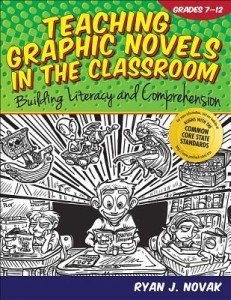 books because graphic novels are longer stories and many are able to stand alone. The prose reading experience, with the pictures and the words working simultaneously, makes a graphic novel something read and seen.
books because graphic novels are longer stories and many are able to stand alone. The prose reading experience, with the pictures and the words working simultaneously, makes a graphic novel something read and seen.
Graphic novels include elements of both print and visual in the creations of characters that move through the narrative within sequential art panels that show the action and characterization and help establish tone and mood. Format and illustration are an important elements of graphic novels, and content is critical in a graphic novel, especially those selected for classroom instruction.
Graphic Novel Evaluation Criteria
Format is critical for any book, but most especially in graphic novels. Format includes exterior and interior elements such as font and font size, word placement and appearance, and arrangement of the art frames on the page. Format enables readers to effortlessly follow the story or hinders readers in their attempt to comprehend. Some criteria for format evaluation are as follows:
- Does the graphic novel have an interesting cover that correctly depicts the content?
- Are the illustrations arranged in a way that readers can easily follow the sequence?
- Do the gutters (i.e., the spaces between the illustrations) aid comprehension or distract the reader?
- Is the text clearly readable with an appropriate font and font size?

- Does the white space between the text, frames, and illustrations help readers move through the book, or are the pages too busy?
- Is there a glossary to assist with vocabulary in nonfiction graphic novels?
- Is there a table of contents or index to help readers locate information in nonfiction graphic
The artistic rendering of the story contributes to half the ability to comprehend it fully; therefore, the illustrations are equally as important as the text. The illustrations add the information and detail missing from the text. Although the clues may be evident or subtle, the illustrations enable the reader to make inferences and judgments separate from the reading and understanding of words.
It is the illustrations that create the effect of watching a movie. Similar to that experience, the reader becomes part of the story through the illustrations and the words. It is also the illustrations that set the tone or mood of the story or nonfiction information.
Although personal tastes in art may vary greatly from one person to another, the rule for graphic novels is that the illustrative art must be true to the content.
Graphic Novel Illustration Criteria:
- Does the color palette (e.g., pastels, primary colors, sepia tones) aid the reader in understanding the tone and mood of the story?
- Do the illustrations refine characterization by giving clues as to character emotion, mood, and personality?
- Does the style of art (e.g., abstract, impressionist, surrealist) fit the type of story or information in the novel or seem disjointed and out of place?
- Has both positive space (i.e., the objects in the illustrations) and negative space (i.e., the space between the objects) been used to create a visually pleasing effect?
- Do the illustrations provide enough context and action to keep the reader moving through the story?
The final consideration is the fiction or nonfiction content of the graphic novel. Format is much like the bread on a sandwich and the illustrations like the toppings, and the content is like the meat of any graphic novel. For this category of criteria, evaluation of a graphic novel becomes much like evaluating any other book for the library or classroom. These criteria are familiar, but they are listed here to emphasize that good graphic novels contain all the literary elements we expect for quality fiction and nonfiction books.
like the meat of any graphic novel. For this category of criteria, evaluation of a graphic novel becomes much like evaluating any other book for the library or classroom. These criteria are familiar, but they are listed here to emphasize that good graphic novels contain all the literary elements we expect for quality fiction and nonfiction books.
Fiction graphic novel evaluation criteria:
- Does the graphic novel have three-dimensional characters with characteristics similar to your readers?
- Does the graphic novel have themes relevant and important to your readers?
- Is the conflict relevant and appropriate for your readers?
- Are there age-appropriate moral, ethical, or political themes that resonate through the story?
- Does the action keep your readers’ interest and motivate them to continue reading?
- Is the climax realistic and true to the rising action?
- Is the denouement satisfying as a culmination of narrative events?
- Does the resolution bring the conflict to a satisfying end?
Nonfiction graphic novels evaluation criteria:
- Does the content have a clear organization that aids reading comprehension?
- Is the information interesting enough to keep readers actively engaged with the text?
- Are there appealing charts, graphs, and other visual aids to help the reader understand the concepts?
- Are there enough supporting details to explain or describe each main idea?
- If the information is sequential, such as a to, are there enough steps so that the reader can replicate the process?
- Is the content relevant and age-appropriate for the developmental level of your readers?
Graphic Novels, Adolescents, and Readability
Age appropriateness is a concern when selecting any materials for the classroom and library. When there is a question of age appropriateness, a wise teacher or librarian will consult the professional review sources such as the School Library Journal or The Horn Book for recommendations. These professional reviews can be accessed using many of the book vendor tools, such as Follett Library Resources’s Titlewave or What Kids Are Reading: The Book Reading Habits of Students in American Schools.
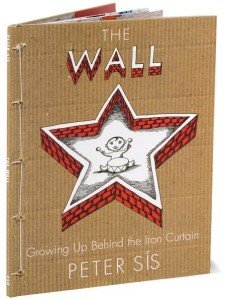 Adolescents usually like reading about protagonists two years older than their own age. It is important to look at the themes in graphic novels and ask if the themes fit with your students’ development level. Conflicts are also important. Will your students be familiar with the conflict in the graphic novel you are considering, and will it be interesting to them? As with selecting any reading material, the maturational development of your students should be a key concern for graphic novel selection.
Adolescents usually like reading about protagonists two years older than their own age. It is important to look at the themes in graphic novels and ask if the themes fit with your students’ development level. Conflicts are also important. Will your students be familiar with the conflict in the graphic novel you are considering, and will it be interesting to them? As with selecting any reading material, the maturational development of your students should be a key concern for graphic novel selection.
Some educators choose to look at readability levels for graphic novels using tools such as Accelerated Reader’s ATOS or Lexile Measures. Readability formulas are based on an analysis of words within sentences or paragraphs. These numerical formulas do not assess illustrations and the effect they have on comprehension. Because word and illustration are fused for meaning in a graphic novel, readability formulas can mislead educators who are trying to match books to a student’s reading ability.
For Peter Sís’s “The Wall: Growing up behind the Iron Curtain,” the ATOS readability level is 5.2, or fifth grade second month, whereas the Lexile measurement is listed as 760, or third grade. I am not sure that either readability level takes into account the political and moral issues Sís describes in his autobiographical graphic novel, which shows what it was like to grow up in an intellectual prison and depicts his symbolic use of color, especially red.
Although readability may be an issue for selection of fiction or nonfiction, children and adolescents will select the graphic novels that appeal to them in content as well as readability. The graphic novel format also enables some students to read materials that were previously too difficult in length or in use of language.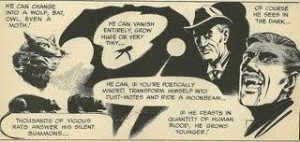
The Puffin Graphics from Penguin Group USA are re-creations of classics such as the Wizard of Oz, Macbeth, and Dracula that stay true to the original works but include beautiful illustrations that aid reading comprehension. One of the reasons graphic novels are so appealing to many readers is the wide variety of appealing content: classic literature, manga, science fiction, historical fiction, problem novels, and every other genre existing in literature.
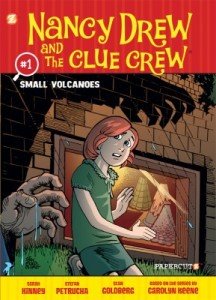 Papercutz is dedicated to publishing great graphic novels for all ages. Popular with reluctant readers and gifted readers alike, Papercutz graphic novels for kids, tweens, and teens include a wide range of genres, including humor, action adventure, mystery, horror, and favorite characters. Papercutz is proud to be the only publisher exclusively dedicated to children’s graphic novels. We work every day to introduce young readers to the imaginative wonders waiting to be discovered in comics.
Papercutz is dedicated to publishing great graphic novels for all ages. Popular with reluctant readers and gifted readers alike, Papercutz graphic novels for kids, tweens, and teens include a wide range of genres, including humor, action adventure, mystery, horror, and favorite characters. Papercutz is proud to be the only publisher exclusively dedicated to children’s graphic novels. We work every day to introduce young readers to the imaginative wonders waiting to be discovered in comics.
Advantages of Using Graphic Novel to Educate
Graphic novels provide new learning opportunities for adolescents in both middle school and high school. Many adolescents are already aware of this format, even though the reading of these books requires different skills than novels with prose only. Linear reading graduate students complained when they were required to read a graphic novel and adult readers, who are not used to reading a graphic format, have some difficulty with sequencing, which is why these books may not be for all readers but instead for those students who know and prefer this format.
Teachers can use parts of graphic novels that merge and connect with their instructional units or offer a choice for a graphic novel book club. Graphic novels are also good for book talks and reading motivation. If you want a student reading, short book talks about popular teen literature can alert students to titles that interest them and motivate students to read in their leisure time, which is often divided by extracurricular activities, watching television, spending time with peers, and checking the Internet.
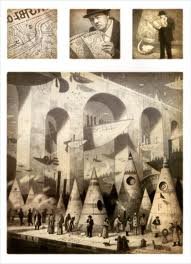 Graphic novels for middle school readers should include both fiction and nonfiction and engage the readers as active reading participants. Jason Lutes’s “Houdini: The Handcuff King” is a graphic biography that allows readers to not only understand Harry Houdini but also the world he lived in and those people closest to him. This book could be included in a study of famous people and would motivate the reader for further research.
Graphic novels for middle school readers should include both fiction and nonfiction and engage the readers as active reading participants. Jason Lutes’s “Houdini: The Handcuff King” is a graphic biography that allows readers to not only understand Harry Houdini but also the world he lived in and those people closest to him. This book could be included in a study of famous people and would motivate the reader for further research.
For those advanced readers who like graphic novels, Shaun Tan’s “The Arrival” is a clever graphic philosophical story in which the reader becomes an immigrant to a strange, new land. This graphic novel would be a wonderful connection to the discussion of immigrants and their experiences. For those readers of realistic fiction, Kevin Pyle’s “Blindspot” is the story of a boy so wrapped up in playing war games that he neglects his schoolwork until he encounters a homeless war veteran who invades the boy’s battleground and changes his perspective of war. This novel would be a welcome addition for units focusing on war and conflict as well as the study of characterization through image and text.
For those fantasy lovers and fans of Brian Jacques’s “Redwall” series, David Petersen’s Mouse Guard series provides a search for truth and a stunning betrayal as the Mouse Guard protects the Mouse Territories from hungry snakes and treachery. The Mouse Guard series would aid any teacher who wishes to focus on the elements of fantasy, story, tone, and mood with both text and image.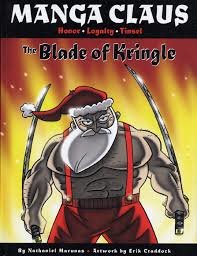
Finally, for those readers who love humor, Nathaniel Marunas’s “Manga Claus: The Blade of Kringle” recounts the story of an unhappy elf who enchants a ninja nutcracker that zaps the teddy bears with its evil powers and turns the workshop into chaos as the clocks ticks off the seconds until Christmas. Besides being a humorous holiday read, Manga Claus is a manga parody and would fit into a study of the manga format and other Japanese cultural studies.
High school selections could include George O’Connor’s “Journey into Mohawk Country: The Journal of Harmen Meyndertsz van den Bogaert,” a secondary English teacher’s dream because the entire story was written using primary documents and is translated from Dutch. This graphic nonfiction selection would be an excellent model for primary document research and creating a graphic novel based on research findings.
 Further nonfiction study of famous people might include Andrew Helfer’s “Malcolm X: A Graphic Biography,” based on the autobiography Malcolm X wrote with Alex Haley. This graphic novel situates Malcom X’s life within the context of the Civil Rights movement, would fit into the study of black history, the Civil Rights movement, and autobiographies, or biographies, and is sure to motivate readers for further research.
Further nonfiction study of famous people might include Andrew Helfer’s “Malcolm X: A Graphic Biography,” based on the autobiography Malcolm X wrote with Alex Haley. This graphic novel situates Malcom X’s life within the context of the Civil Rights movement, would fit into the study of black history, the Civil Rights movement, and autobiographies, or biographies, and is sure to motivate readers for further research.
For those students who are interested in realistic fiction with punch, Mike Carey’s “Re-Gifters” looks at the friendship between a Korean American teen, Dixie, and her friend, Avril. Dixie learns a difficult lesson and discovers the meaning of true friendship. Cecil Castellucci’s “The Plain Janes’ is a story of misfits who, despite their good intentions, manage to gain the attention of the suburban police while they earn a reputation as outlaws. Gipi’s “Garage Band’ is the story of four very different friends who come together to form a band. When they get a chance to sign with a record 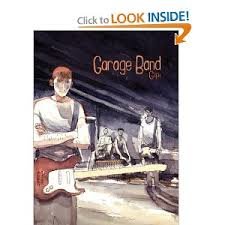 label, a blown amp catapults them into an unexpected brush with crime. All three of these books would help students understand cause and effect and have well-developed stories with some surprises. Re-Gifters and The Plain Janes would appeal more to girls, whereas Garage Band would appeal to both girls and boys.
label, a blown amp catapults them into an unexpected brush with crime. All three of these books would help students understand cause and effect and have well-developed stories with some surprises. Re-Gifters and The Plain Janes would appeal more to girls, whereas Garage Band would appeal to both girls and boys.
Graphic novels can provide a myriad of teaching and learning opportunities for readers, educators, and researchers. As an increasingly popular format, readers will continue to select those books they want to read in their leisure time, and many of these titles will be graphic novels. Educators are observing this format as a possibility for reading motivation and learning.
ABOUT COMIC BOOK LEGAL DEFENSE FUND
Comic Book Legal Defense Fund is a non-profit organization dedicated to the protection of the First Amendment rights of the comics art form and its community of retailers, creators, publishers, librarians, and readers. CBLDF provides legal referrals, representation, advice, assistance, and education in furtherance of these goals. http://www.cbldf.org
They have recently published a booklet, “Raising a Reader! How Comics & Graphic Novels can help Your Kids Love to Read!” (See article below). In the publication they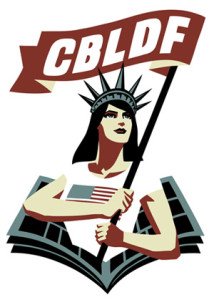 talk about what comics and graphic novels offer young readers, show what goes into reading a comic, and provide some recommendations for way to create reading activities for individuals and groups, and directions to resources.
talk about what comics and graphic novels offer young readers, show what goes into reading a comic, and provide some recommendations for way to create reading activities for individuals and groups, and directions to resources.
WHAT GRAPHIC NOVELS OFFER KIDS
Visit a Visual Wonderland
Imagine a book with scenes of vivid colors or in black and white images, whose textures you can feel escorting you through a story, a life, a world, as short bursts of text and windowed panels and panes lead you through that realm. This is the graphic novel reading experience awaiting you and your kids. It’s inviting, exciting, and always engaging.
Graphic Novels provide exciting reading experiences for all kinds of readers.
Graphic novels’ short bursts of text (often in fun fonts) and vivid images are accessible to all kinds of readers and language learners.
For Weak Language Learners and Readers
Graphic novels’ concise text paired with detailed images help readers decode and comprehend the text. Reading is less daunting (with less text to decode), with concise verbiage that highlights effective language usage and vocabulary, and the images invite and engage readers.
For Skilled Readers
Graphic novels offer a different type of reading experience while modeling concise language usage. Because the text has to be succinct, graphic novels model how to efficiently communicate stories, lines, and ideas in short, pithy text.
Graphic Novels by their Very Nature Draw the Reader into the Story
With graphic novels, readers actively construct the story as they travel across and down the page from panel to panel, processing the text and images. Furthermore, the vivid images transport readers, making them feel like they’re there in the middle of the action. This creative and interactive process makes reading engaging and often more fun.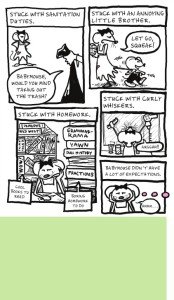
The Quality, Quantity, and Diversity of Kids’ Graphic Novels is Simply AWESOME.
With the explosion of technology, communication, and graphic arts, graphic novel illustrations, formats, and story-telling are diverse — appealing to all types of readers. Outstanding children’s and young adult graphic novels can be sound in an array of genres such as fantasy, science fiction, romance, action, biography, and classics. Further-more, there has been a dazzling burst of non-action graphic novels, making them extraordinary re-sources for learning about science, famous people, places, and events in and out of classrooms. These books offer a feast for the eyes and mind and are worth a closer look. Graphic novels and suggested graphic novel reading lists for kids of various ages and grades can be found in local bookstores, comic book shops, libraries, and online. Please visit CBLDF’s monthly column, “Using Graphic Novels in Education,” for suggestions. However, if you can’t wait for our column, and your favorite librarian is out with the flu, here are a few resources to help:
Booklist
Children’s Graphic Novel Core Collection (ALSC)
- YALSA Great Graphic Novels for Teens List
- Kirkus Reviews
- Library Journal
- Library Media Connection
- School Library Journal
- Voice of Youth Advocates
- Good Comics for Kids @School Library Journal
- No Flying No Tights
- The Graphic Classroom
- Graphic Novel Reporter
- Diamond Comics Bookshelf
- Manga Bookshelf
When learning to read graphic novels, you have to be willing to slow down. Realize that this is a totally different reading experience. Realize that you will be reading the text and art, all while incorporating the incoming information as you build the story.
Here are the Basics
In graphic novels, the story is broken down and presented in sequential tome frames called panels. Each panel contains text and/or images bound with a specific shape – usually a rectangle box. The panel shape, text, font, color, and shading ALL interact to tell the story.
The panel border that surrounds the panel can be as informative as the panel itself. Panel borders help your eye and mind define and focus on each story segment
- Dream sequences are often presented in panels whose borders consist of dotted or wavy lines.
- Panels convey tremendous force or energy may have their borders interupted as objects, arms, or feet protrude to show force or movement.
- Sometimes conversation panels are embedded in large panels to show what is going on both within an intimate conversation while among larger wholes.
The arrangement of panels on the page also helps tell the story. Typically, panels are arranged (and read) in sequence from left to right and from top to bottom of the page
In the case of Japanese graphic novels, or manga, panels are arranged from right to left and top to bottom, and this reading order is sometimes preserved in the English language presentation.
There are times however, when the panel arrangement may be more novel. For example:
- A small panel may be embedded in a much larger panel to help relate background information along with important information the authors want you to focus upon.
- Sometimes the panels are arranged left to right from the top to the bottom across a two-page spread instead of one page. This is usually done when there are many important sequences (essential to each other) that can’t be broken up with the turn of a page.
- There are also times when the panels are arranged in different configurations — a circle for example — adding details to the story (in the case of a circular arrangement this may be done to show the continuity of the interactions).
Authors know that if the panel arrangement is too unusual, and the readers’ attention is not clearly drawn to the right sequence, it slows the reading (and comprehension) down. Therefore, creators are thoughtful when designing their pages and panel arrangements, carefully guiding their readers’ eyes and attention.
Panels are separated by spaces called gutters. The gutters provide pauses for readers to integrate information from the panel just read. Also, even though the panels are sequentially arranged, there are often jumps in time (from nanoseconds, minutes, hours, days, etc.) or jumps between characters, scenes, actions, and/or events. As a result, the gutters allow the reader to pause and integrate what is, and is not, presented by the authors and illustrators.
Balloons are typically found inside panels and contain the story’s succinct text. The balloons may contain thoughts, dialogue, and/or sound effects — each frequently relayed in different balloon formats. Below is a list of six different types of balloons (from Using Content-Area Graphic Texts for Learning , Jaffe & Monnin, 2012):
• Staging balloons inform the readers and set the stage or changes in the plot, character perspectives, conflict and/or setting. These are often set in rectangular boxes, using a font different from that used for dialogue.
• Story balloons tell the story and move it along.
• Thought balloons relate a character’s thoughts, emotions, and motives. These are typically drawn with wavy lines or have bubbles connecting the character to the thought.
• Dialogue balloons contain text that the characters say aloud.
• Sound-effect balloons convey a sense or sound and often contain large, interesting fonts.
• Balloon-less balloons are panels that contain text relaying some thought, dialogue, or direction not placed in a balloon.
CREATING READING DIALOGUES WITH GRAPHIC NOVELS GRAPHIC
While the graphic novel reading experience is different from the traditional prose novel experience, graphic novels can be read anywhere and in the same forums. Here’s a more detailed look:
Graphic novels for solo story exploration:
This really needs no explanation, but next time you’re in a book store or library, look around — you’ll probably notice some lucky kid engrossed in a graphic novel. And, if you’re lucky enough for it to be your kid, our bet is that s/he won’t want to leave before finishing or taking it home.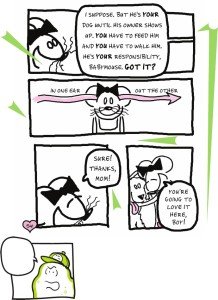
Graphic novels in read-alouds:
Graphic novels are wonderful read-alouds (to one or many kids), as they invite kids to watch and listen as the story unfolds. There are a number of ways you can use graphic novels in read-alouds:
• Read it aloud much like a prose text. As you read each panel you point to it, allowing the audience to follow along. You may want to change your voice for the different
characters, and lower your voice when there is narration or no dialogue. When reading the panels, stop to “take in” and “read” the graphic images as well, commenting on the
details that are there to enrich the dialogue and relate emotions, underlying impulses, and additional story line.
• If your child/student can read, you may want to read this as a play, assigning different roles to different kids and using the illustrations to help with stage directions.
Graphic novels make great book club selections:
Graphic novels have more dimensions for discussion. In addition to the storyline, plot, and characters, groups can discuss:
• How the art (illustration, page design, and/or word fonts) help tell the story while relaying emotions and characters’ underlying motives
• How the panel placements help tell the story
• How the use or omission
• How the artwork (style, color, fonts, panel sizes, and shapes) often changes with the story line (for example dream scenes are often shown in panels with wavy lines instead of the traditional solid lines);
• How the text and images work together to guide the reader through the story.
• Why telling this story in sequential art form may or may not have been the most effective way of relaying it.
Graphic novels as multiple literacy dialogues:
Pairing graphic and prose novels together can expand literary and communication skills. Reading these dissimilar formats on related topics helps kids discover how prose and graphic novels can tell the same story differently while evaluating the pros and cons of each medium.
For example, Marvel has a wonderful Oz series that parallels Frank Baum’s The Wonderful Wizard of Oz. Or you can take a graphic novel like Laika by Nick Abadzis (First Second Books) about how the Russians race to send the first sentient being (a dog) into space, and pair it with Homer Hickem’s October Sky.
For more pairing and multiple literacy ideas please check out these resources:
• Using Content–Area Graphic Texts for Learning (Jaffe & Monnin, 2012) — a guide for middle school students
• Teaching Graphic Novels: Practical Strategies for the Secondary ELA Classrooms (Monnin, 2009)
• The Graphic Novel Classroom: POWerful Teaching and Learning with Images (Bakis, 2011) — also for high school classrooms
• Teaching Early Reader Comics and GraphicNovels (Monnin, 2011)
• Teaching Visual Literacy: Using Comic Books, Graphic Novels, Anime, Cartoons, and more to Develop Comprehension (Frey and Fisher, 2008)
• Building Literacy Connections with Graphic Novels:Page by Page, Panel by Panel (Carter, 2007)
• Graphic Novel Reporter has teacher links and Suggestions
- Readwritethink.org (www.readwritethink.org/ classroom-resources/lesson-plans/gaining-background- graphic-novel-1063.html)
• Check CBLDF.org for our “Using Graphic Novels in Education” column for monthly suggestions.
GRAPHIC NOVELS AND LEARNING: AN AWESOME COMBINATION FOR 21ST CENTURY LEARNERS
Graphic novels are entering 21st century classrooms on all levels, for multiple goals and reasons.Here are a few of them:
Graphic novels empower 21st century learners.
Students are engaged in a verbal/visual communication explosion (infographics; icons on phones, computers and billboards; non-verbal image-driven directions; blogs, texting, and emails). Graphic novels clearly reflect this change. Graphic novels, like infographics, texting, and emails, present essential ideas, dialogue and emotions through concise text and images. They also offer enticing multimedia reading experiences to all kinds of readers and learners.
Graphic novels attract all kinds of readers.
From strong language learners to weak or second language learners, graphic novels attract readers with incredible art and text that unfolds in a multimedia story experience.
Graphic novels easily answer National Common Core State Standard mandates.
Most states have mandated Common Core State Standards (taking effect in 2014) with the goal to teach students to think more critically about what they’re reading, writing, and speaking in language arts, science, math, and history/social studies. Common Core mandates that students employ, evaluate, and compare multiple literacies (with a strong emphasis on non-fiction) utilizing content found in multiple formats and giving reliably sourced evidence to support their opinions. Furthermore, as noted in Appendix B of the Common Core Standards, “visual elements are particularly important in texts for the youngest students and in many informational texts for readers of all ages.” As graphic novels incorporate both verbal and visual literacies and as there are many outstanding non-fiction and historical fiction graphic novels, they are an excellent classroom resource.
Here are just a few ways graphic novels help meet the new state standards:
• They typically use advanced and concise vocabulary to tell a story while the images help define and reinforce words, with the word-image pairing providing additional memory associations for concepts.
• Reading paired prose and graphic novel texts better reinforces memory of content material, as readers create both verbal and visual memory paths and associations.
• Panel displays and concise text help readers clearly distinguish between main ideas and details.
• Comparing prose and graphic novels provides insight into two very different literary formats, leading to discussions on use of dialogue vs. image vs. sentence/ paragraph chapter development. Thus, readers gain a deeper understanding and appreciation of various literary styles, formats, and text structures.
• As the themes, ideas, characters, and events are developed in a visually sequential manner in graphic novels, it is easy to chart their development.
• Graphic novels provide an outstanding means of studying metaphor, as images are often used to develop and reinforce them.
Graphic novels foster and strengthen multiple learning skills essential for success in and out of the classroom.
Attention and attention to detail: Reading and integrating text and illustrations in graphic novels help students slow down as they read and facilitate observation of and focus on details. The short bursts of text empower students who have weak attention skills, helping them focus on language and the unfolding plot while the engaging art holds their attention and draws them into the details.
Memory: Graphic novels pair visual and verbal storylines, creating additional memory pathways and associations. Research shows that our brain processes and stores visual information faster and more efficiently than it does verbal information. As a result, incorporating graphic novels into home and school libraries and pairing them with traditional prose texts is an excellent means of promoting verbal skills and memory.
Sequencing skills: Graphic novel panels and their sequential arrangement of page and story visually and verbally break the story into easily recognizable parts. As a result, readers automatically focus on its sequence, reinforcing concepts of beginning, middle, and end. Furthermore, with graphic novels, students can easily chart development of story, character, plot, and themes over time.
Language and language usage: Graphic novels appeal to all language learners and readers. The concise text highlights word usage and vocabulary. The illustrations help define and reinforce vocabulary. Graphic novel selections in classrooms empower and engage all types of learners and readers, and increasing numbers of second language learners have commented on how reading graphic novels helped expand their vocabulary and grammar skills.
Critical thinking: Graphic novels reinforce critical thinking in a number of ways. Abstract concepts such as inference, metaphor, and social context are often difficult concepts for kids to comprehend. They are usually taught through classroom discussions, which pose a distinct challenge for visual learners, for students with weak language skills, or for concrete learners with weak higher-order cognitive skills.
Graphic novels can help by:
- Verbal and visual cues in graphic novels aid comprehension and inference.
- Visual details help explain and reinforce content and abstract messages.
- Visual and verbal cues empower readers to compare and contrast how vital information is presentenced
- Metaphors permeate graphic novels, and the visual and verbal pairing makes them more obvious, more concrete, easier to understand, and more relatable.
- Sequential presentation of text and images provides natural opportunities for scaffolding and comprehension.
- Graphic novels’ gutters offer natural breaks in which readers can pause to evaluate what they just read, making sure they comprehend events and character motives.
- Information (and story) gaps between the panels require active problem solving as readers extrapolate what is missing.
- Short bits of text make it easier for readers to recognize the main ideas.
There are graphic novels for every reader, but not every graphic novel is right for all readers. Much like prose, movies, and TV, comics are a huge medium encompassing a wide variety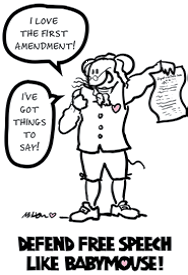 of stories. Just like other entertainment media, parents should be involved in deciding what comics are right for their kids to read.
of stories. Just like other entertainment media, parents should be involved in deciding what comics are right for their kids to read.
Comic Book Legal Defense Fund works to help parents in this area in a variety of ways. We publish informational tools like this one. We also offer regular features on CBLDF.org, such as our “Using Graphic Novels in Education” column.
One of our signature efforts is our activity as a sponsoring partner of the Kids’ Right to Read Project, a coalition of organizations that monitors and responds to challenges to books in schools and libraries. As part of KRRP, we provide proactive substantive assistance to help keep comics in circulation when they are challenged.
CBLDF believes that parents have a right to choose what comics are appropriate for their children to read, and that all parents should be afforded that same freedom of choice.

Recent Comments